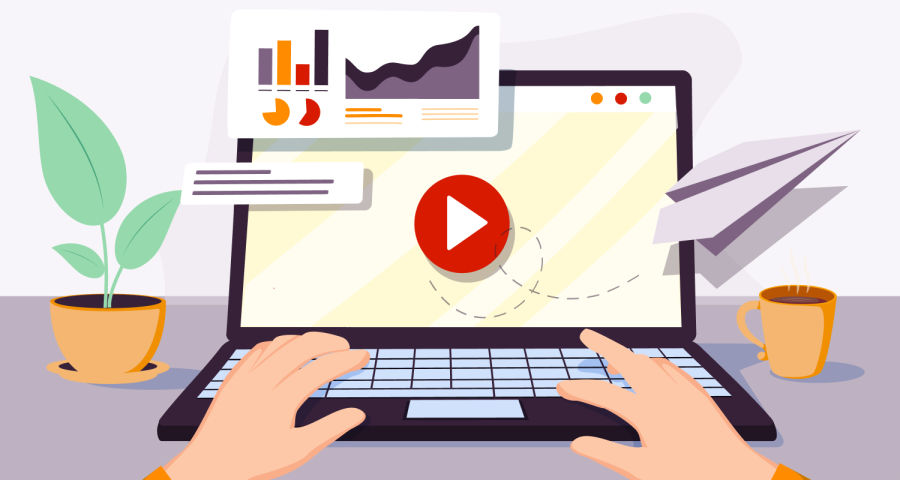//
Dec 21, 2020
Salesperson To Educator: How to Adapt the Inbound Philosophy To Increase Sales Revenue
Sales. Has. Changed.
This one is for my brothers and sisters that have been battling in the sales trenches for many years. I’m so happy to announce that the battle is over! With , we’re finally meeting our clients on their turf and supporting them over the finish line, as opposed to pushing them to get there. I have to say it was a long road, but oh so worth it.
In fact, I have to admit that I’m not 100% there just yet. Unfortunately, in some cases, the longer you’ve been in sales the more difficult it is to truly adapt the inbound philosophy.
What is the inbound philosophy?
Let’s see, how about a good old boxing analogy? Really? Are you sure? Okay, well, I’m doing it anyway. I used to take boxing lessons and I was amazed at how technical boxing is. The footwork, the body positioning, the strategy, it felt like doing calculus while getting punched! At the end of every session, my coach would have a TON of advice for me (yeah, I’m not good), but the one thing he said very consistently was this:
“Learning all of these techniques and strategies are certainly important, but let me tell you this, it takes years to truly benefit from them because once you’re actually in a fight they all go out the window.”
Thankfully, I’ve never had to test the validity of this statement in an actual ring! But that message really stuck with me.
Since I’ve been an inbound sales professional (and one who actually sells the strategy of inbound to my clients) I’ve thought a lot about these insightful words when I find myself in the middle of a sales call.
In discovery meetings, I find myself looking for openings to close and jumping at them. Or trying to “Lead the conversation” in a “consultative” way (by the way, this term, consultative selling, means something different to everyone and is most often just old school, pushy selling in a more passive-aggressive form.
I could do an entire blog on consultative selling but let’s table that, for now). With inbound, you truly have to sit back, listen, and learn from your prospective client — not try to teach them things you think they ought to know.
Ready to speak to an inbound professional?
How inbound improves all old sales process
After years of feeling obligated to stick to my “ABC’s” this process actually takes time and training to fully embrace. One of the immediate concerns is the fact that we all have sales goals that more often than not will require little to no mistakes to achieve.
The need to maximize every client interaction can be overwhelming. This urgency creates desperation, and, well, you know, it goes quickly downhill from there. But If you truly allow yourself to relax, gather information, and NOT rush to close, you will very organically be able to determine if you have the potential for a partnership, and so will they.
Once both sides recognize this fit, this synergy, you’ve created an incredibly strong foundation that is so much easier to build upon. I should be careful with the term “organically” here because being able to recognize these potential partnership opportunities is where a sales background certainly does come in handy.
However, the impulse to jump from hiding and attack when this recognition arises has been the most difficult impulse to discard. But I will say this when you do get rid of this impulse and let your client drive this relationship while you truly listen and learn, it’s a truly wonderful thing and your sales results will become proof of this.
How has this inbound philosophy completely changed the sales process for the better?
Seeing that every company is different, how could this philosophy possibly apply to all sales processes, products, and services? I’m glad you asked. If there is one comment I hear from my clients and potential customers more than anything else, it’s this:
“This all sounds great and all, and we certainly agree with a customer-focused approach. However, our company is different than most and I just don’t think this will work for us.”
This is where I have to push back. I say what I think is the foundation of the Inbound philosophy:
“I completely understand that your product/service/brand has its very specific place in the world, and in your industry, but you have to understand that the inbound sales process has nothing to do with any specific brand/product/service or sales process. It focuses on how customers buy things, not how you sell things, and you’ll find that this process is very much the same across the board.”
The foundation of Inbound is about building trust with your customers, and it works exactly the same way for B2B, B2C, and everything in between.
Let’s have a closer look at what you need to become an inbound sales star.
Boost visibility, create engagement, increase leads and make more money with Inbound Marketing
Follow our free, easy-to-follow video series designed to show how to attract and convert more leads— and make more money with these tactics.
Technology Changes
Okay, in order to keep this blog-length as opposed to “War and Peace,” let’s break this into two parts:
Part 1: How inbound selling is the result of technology
I think it’s important to establish the fact that the only reason we’ve become so enlightened by this new inbound sales philosophy is based on how technology has changed the way people buy things. Think about it, no matter what you’re looking to purchase, what do you do first?
You do a Google search to educate yourself. You’ll look at the potential problems that come with making this purchase, the prices and why these price ranges exist, the customer feedback/reviews, the best in class companies, etc., etc. Why wouldn’t you!? It’s all there!
Back when we had to depend on a sales rep from the company to give us all this information, the information they gave us was one-sided. We don’t have to deal with that anymore. Consumers have become so much more empowered.
What does this have to do with inbound, you ask?
I’ll tell ya: Companies who were smart enough to recognize this trend decided that they wanted to be “in the mix” during this “Awareness” stage of the buyer's journey. These forward-thinking companies started answering these questions by (blogs, white papers, e-books, videos) where the customer was searching for them.
That’s it. Those who did it best remained opaque on brand and product until they had built some trust. This is inbound.
These companies built trust with those customers who were educating themselves on specific products/services. This trust automatically placed them in the running for a potential purchase.
Of course, this doesn’t mean that those who had content in play always won the deal, but they had a MUCH better chance of winning than if they didn’t have content in this awareness stage. I won’t go through the entire buyer’s journey but I know you can all take it from there. If you’re visible and “findable” in the beginning of the buyer’s journey, the chances of you being there at the end are MUCH greater.
Part 2: The role technology plays to enable the effectiveness of inbound
Marketing automation software and (CRMs) is essential to the inbound sales process. At Watermark, we use both Sharpspring and HubSpot, but there are others.
These systems allow you to recognize when, where, and how often these customers have engaged with the educational information you have out there. This is absolutely huge because you know a little bit about what they want to know and you can intervene to help answer questions.
Figuring out when/where/how to intervene takes some time and structure, which can be learned by anyone/everyone, but let’s just say that inbound would be extremely difficult at first, and eventually impossible, without the insight into the customer journey that marketing automation software provides.
The Human Changes
Okay, so now you have your marketing automation software built securely into your company tech stack. Your front office team is producing brilliant educational content to help solve the problems and reach the goals of the ideal customer profile/ you’ve defined.
And then, suddenly, magically, BOOM! You start receiving inbound leads. Maybe they’ve provided their information in a form to download a white paper, or, they’ve asked for a product demo, or maybe they booked a meeting with you through a link on your contact page! It’s time to make that call!!
Three Tips/Guidelines For Your First Inbound Contact:
1. Just Ask, Don’t Tell:
First, if you’ve been in sales for a while, go ahead and forget everything you’ve learned about contacting a lead. You’re not going to talk about you, your company, how much better your products/services are, or any of these pitch tactics we’ve been using for far too long.
In fact, there should be ZERO pitching in this first call. You’re simply going to ask them if they have questions about what they’ve already viewed and go from there. In other words, allow them to open up about their challenges and goals and listen carefully.
2. Follow The Lead:
The questions they have about what they’ve learned will inevitably and naturally lead to other problems/questions/concerns they have, as long as you’re truly open to helping them by learning everything you can about what it is they’re trying to accomplish. Okay, this is where that window of (what you think is) opportunity will open.
Do NOT jump through it!!
For a B2B sales process, even most B2C situations, I can’t see how ANY opportunity to close here would be good for you/your business in the long run.
We’ve all had those over-eager clients who appear to not be at all interested in the cost vs value discussion. They just want to buy now! How many of these clients ended up working out for you? Exactly.
Spouting off about how your company can help them will not work for you here, and I guarantee you haven’t learned enough about them in this short amount of time to truly help them. So, resist the urge, keep learning.
3. Book Another Appointment and Send a Recap:
Plan on scheduling at least one additional meeting. Do some research and really dig deeply into discovery in order to customize your solution for this client. I find that the best thing to do in order to build trust is to follow up on the initial meeting with a thorough recap of your first discussion via email.
This will not only prove that you were indeed listening, but inevitably you'll think of more questions as you review your notes, or that you forgot to ask. I’ve found that my second meeting goes much more smoothly if I send this recap than if I don’t. I feel this is due to the fact that your client simply feels like they know you, and they like you because you’re truly there to help.
You’re building a relationship by showing that you care about solving their problems. This is how relationships are built in sales today. I’m not saying you should completely do away with martini lunches and tickets to the game, I’m just saying that truly helping them achieve their goals is also nice.
Your next meeting should go deeper into discovery.
Send a thorough agenda for this meeting and here is where you’ll use strategies like Hubspot’s CGPT - BA (Challenges, Goals, Plans, Timelines, Consequences, Implications, Budget, and Authority) to get a much better idea of the problems and proposed solutions for this potential client.
Schedule a solid hour to ninety minutes for this call.
Next time I will dig into the discovery process, but here’s a teaser that you might not like: There will likely be no pitching here either. Welcome to the new sales. You’re going to love it! Now go get ‘em, tiger!!!
Ready to schedule a call?







